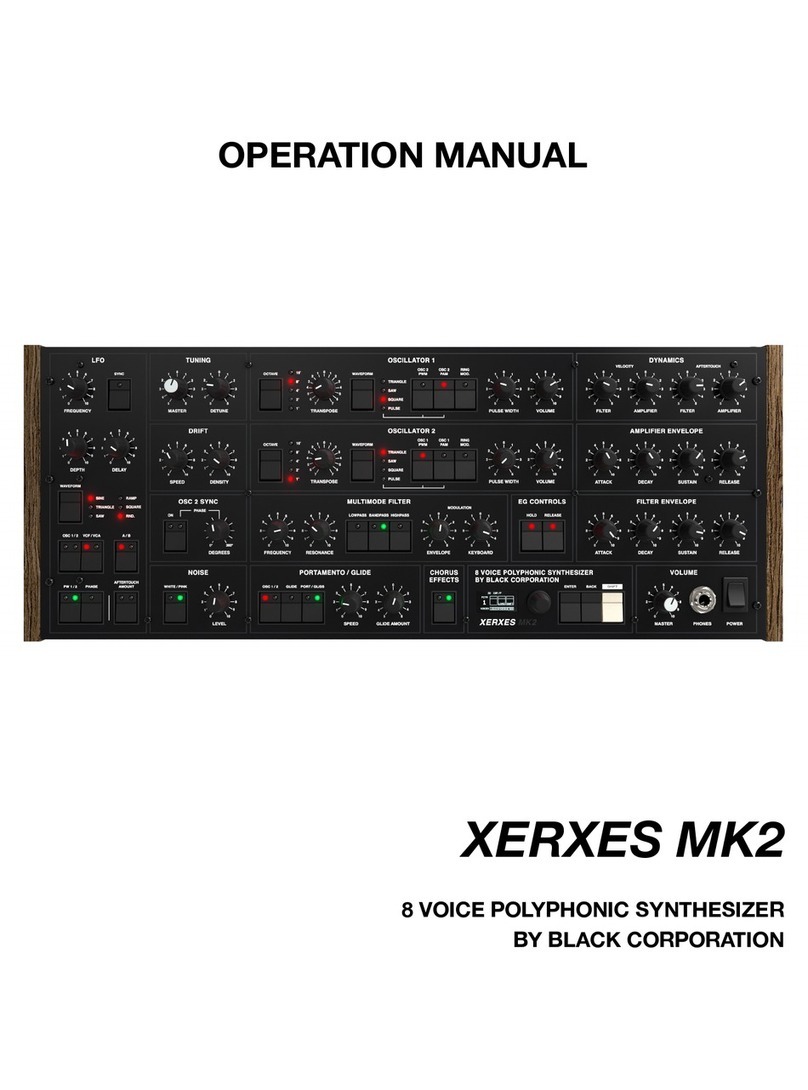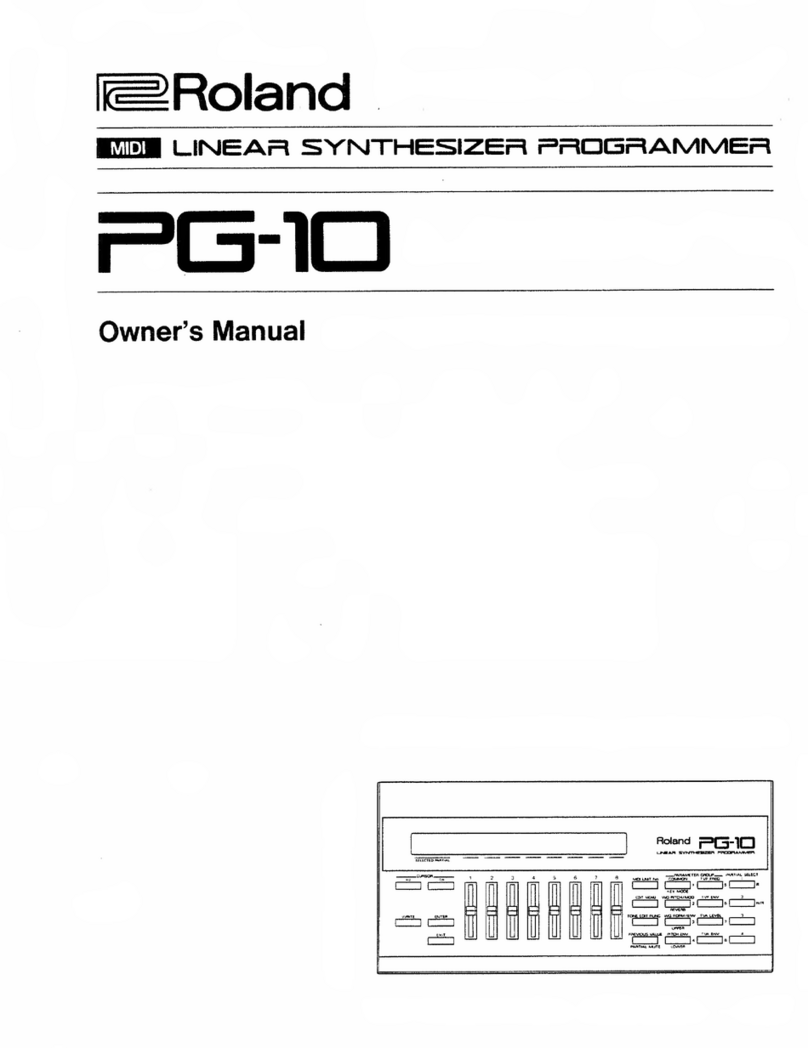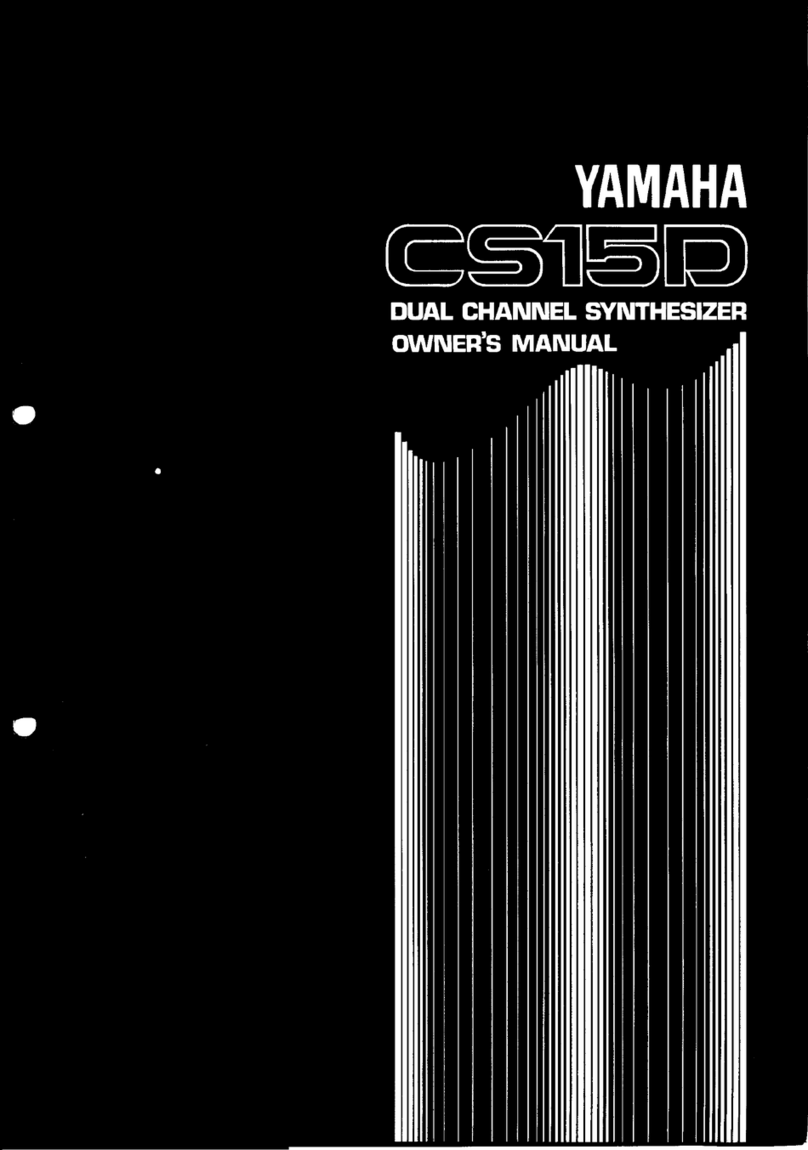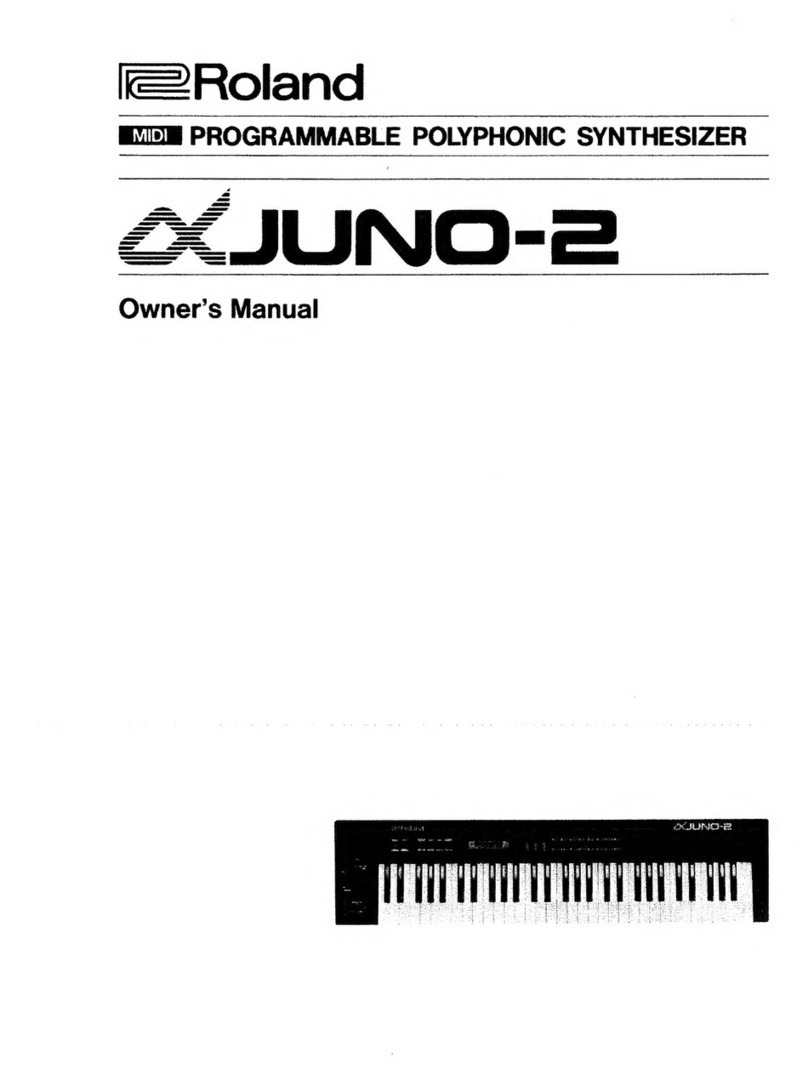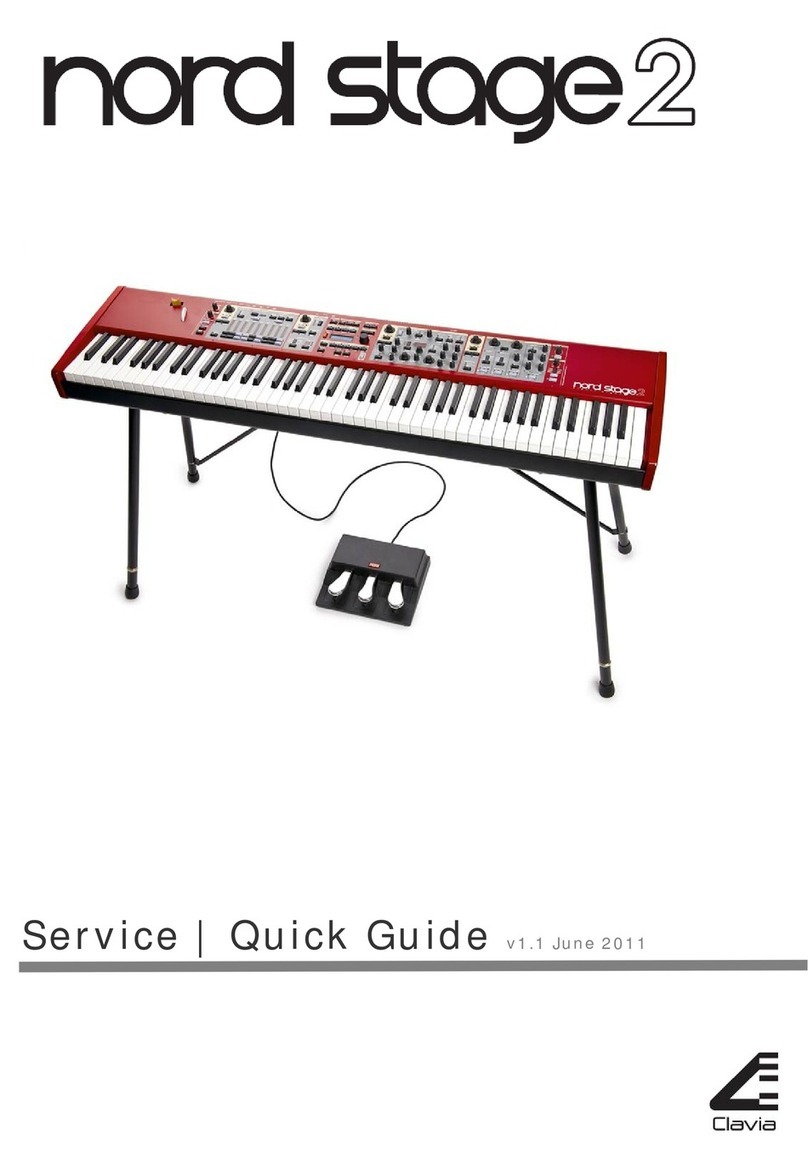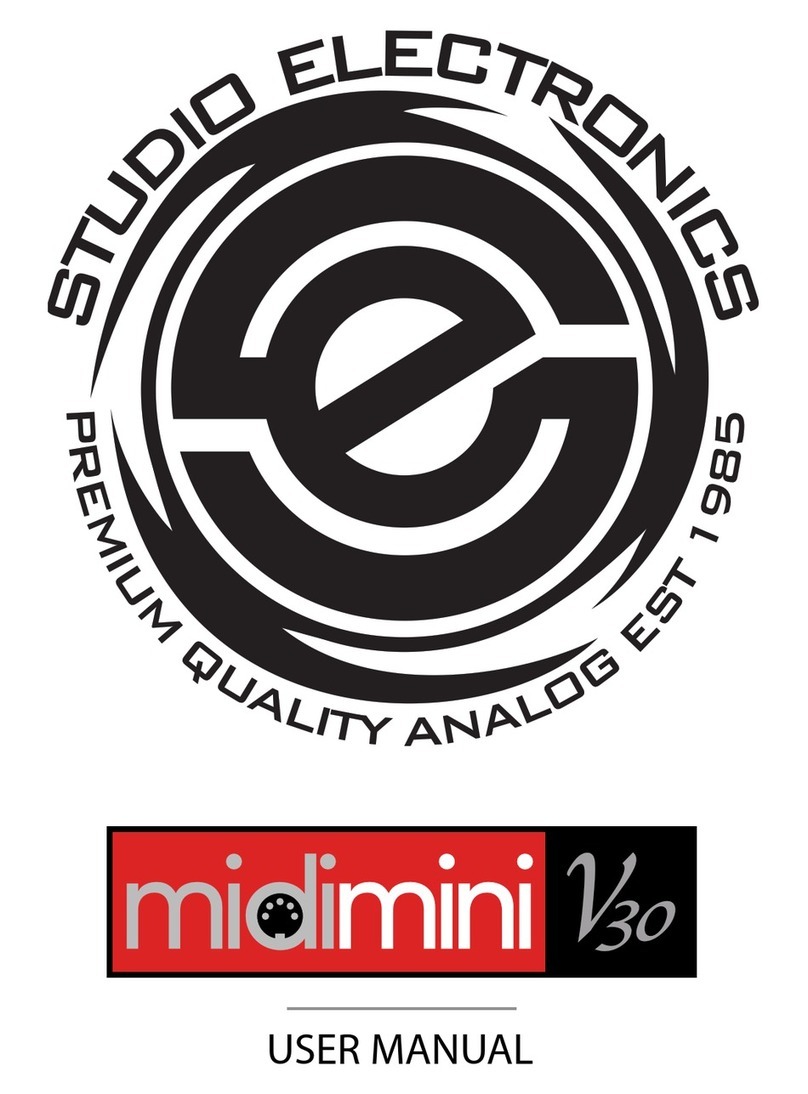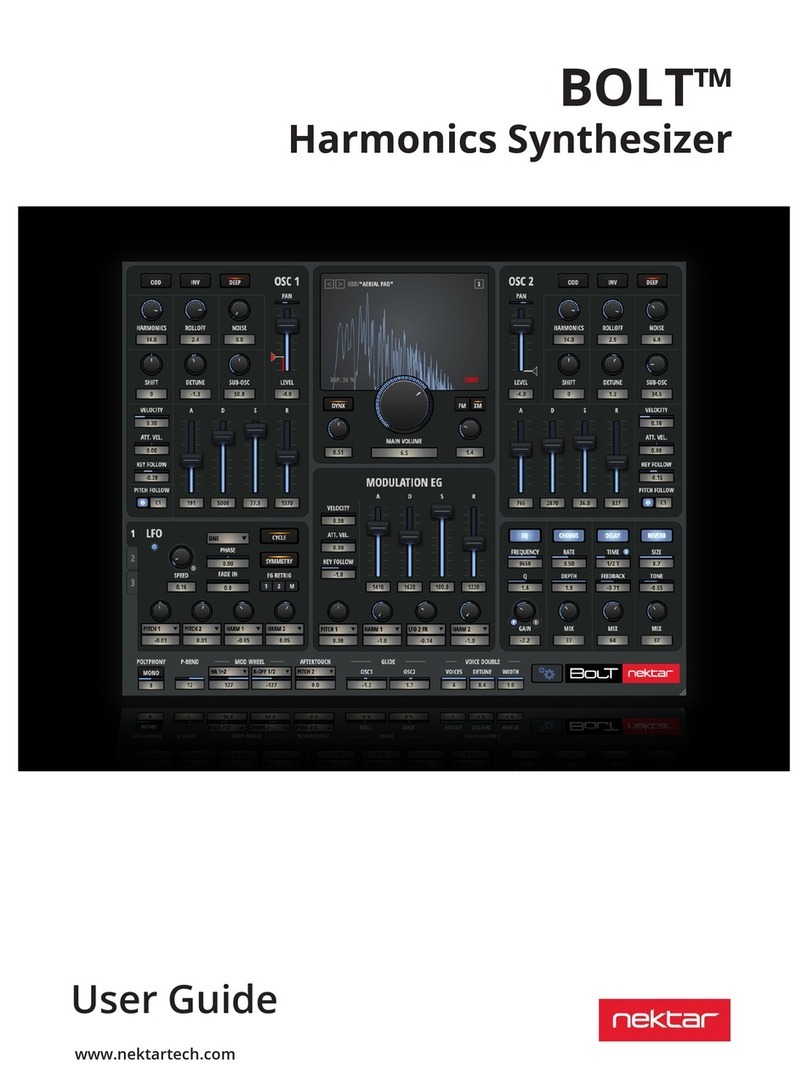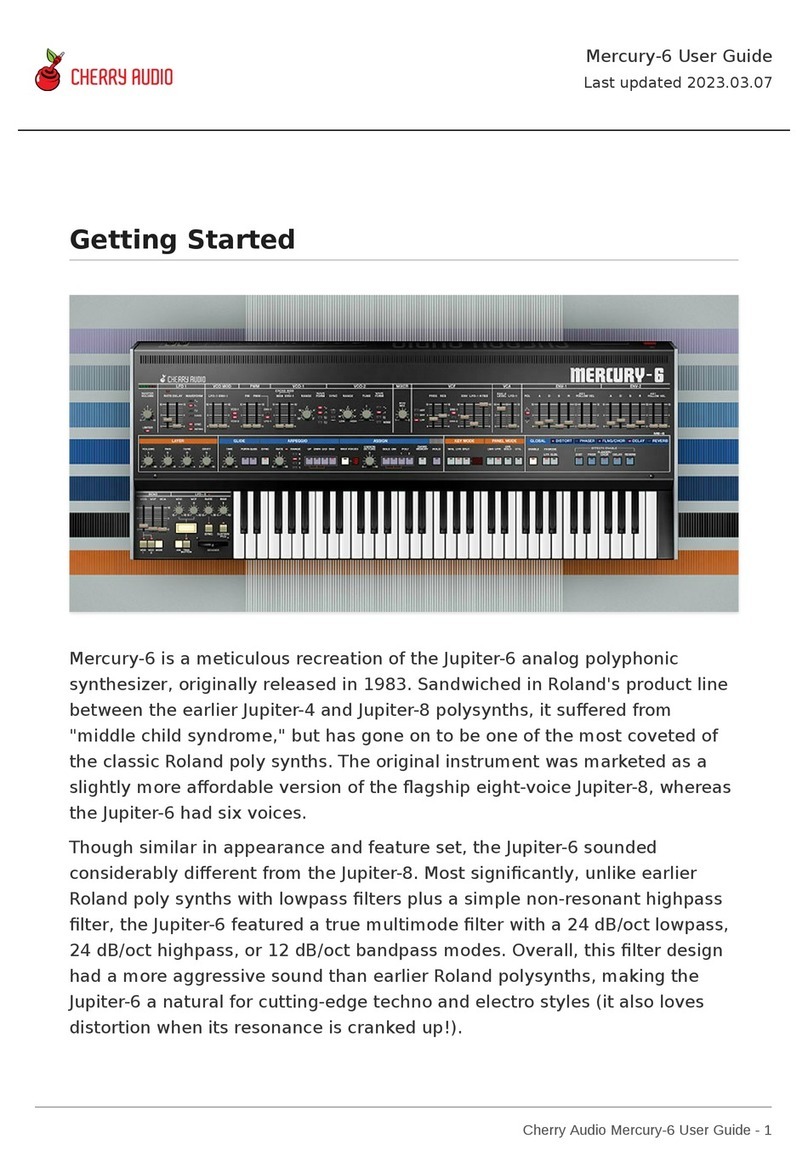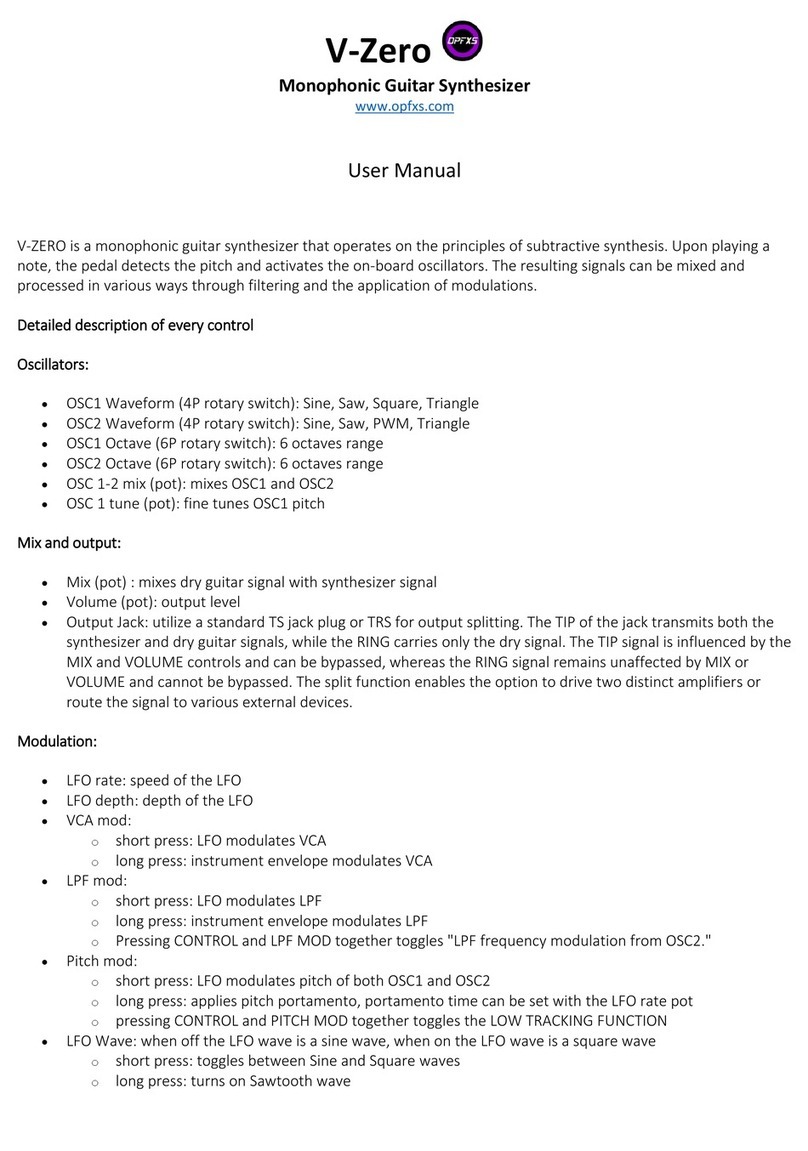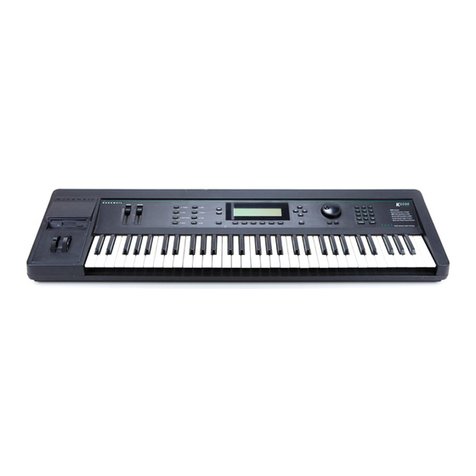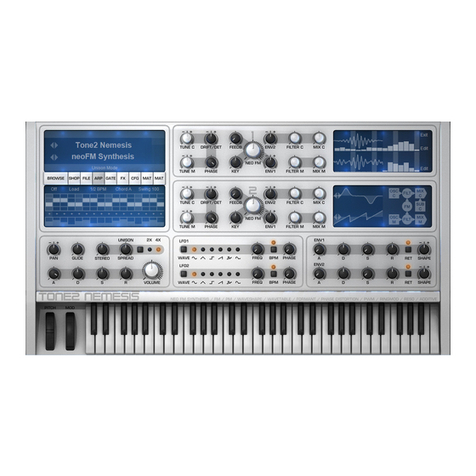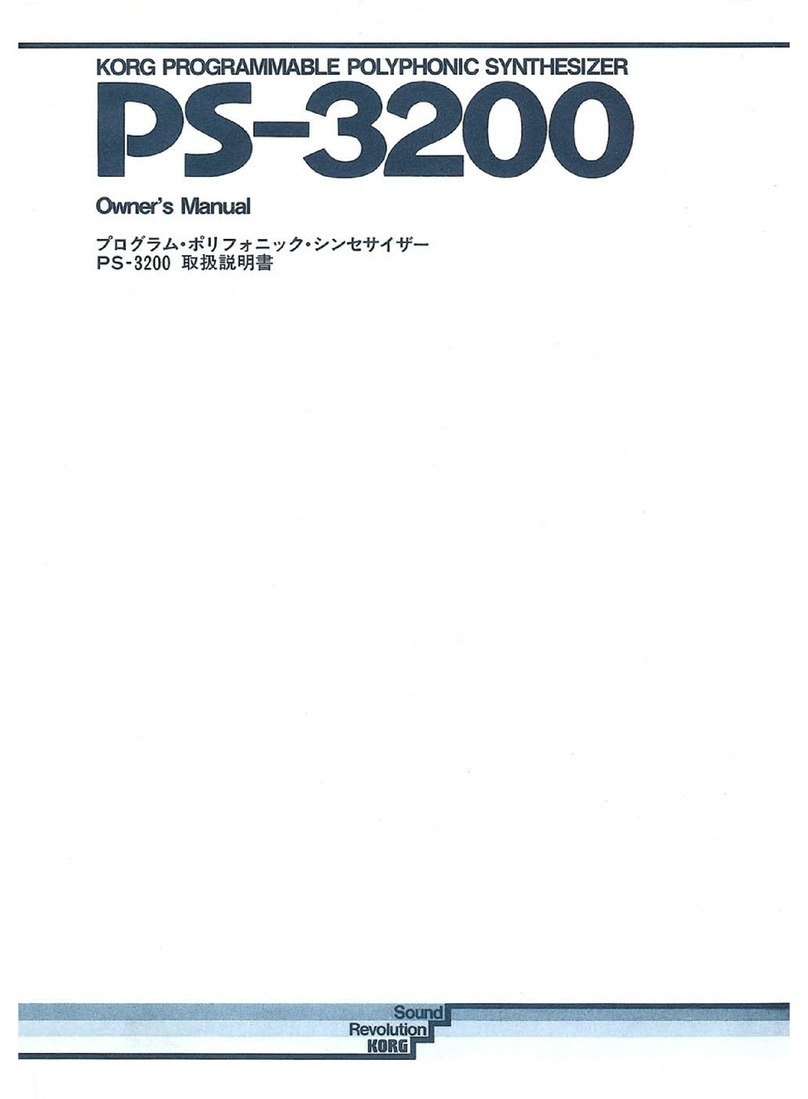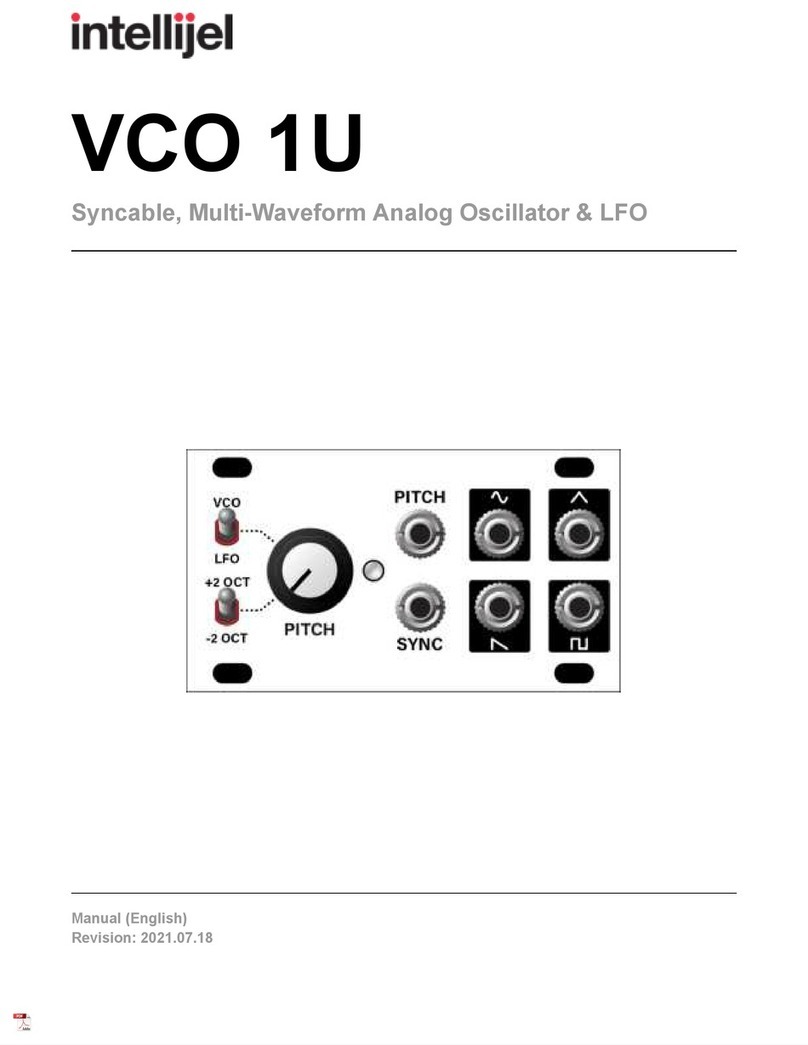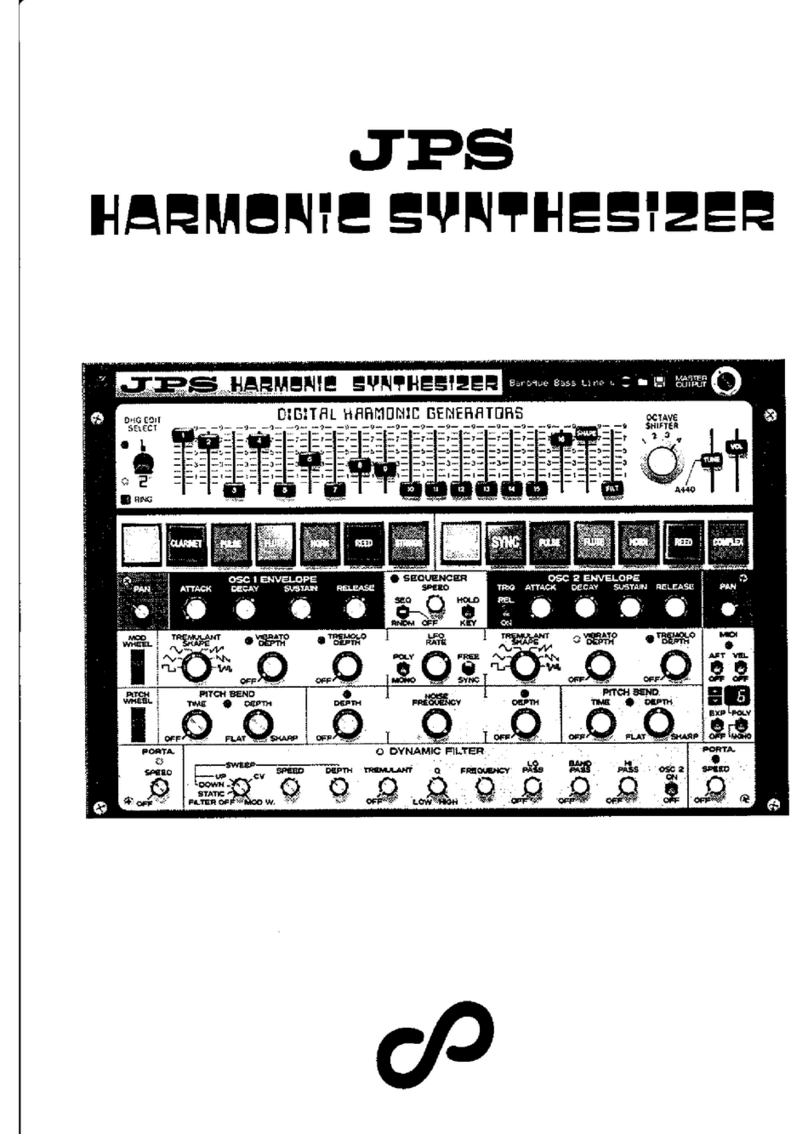Black Corporation XERXES User manual

INSTRUCTION MANUAL
XERXES
8 VOICE POLYPHONIC ANALOG SYNTHESIZER
BY BLACK CORPORATION

XERXES INSTRUCTION MANUAL REV 0.7
Page 1of 21
TABLE OF CONTENTS
INTRODUCTION.............................................................................................................................................2
FEATURES AND SPECIFICATIONS...................................................................................................................2
FRONT PANEL................................................................................................................................................3
OSCILLATOR 1 AND 2 ................................................................................................................................4
MULTIMODE FILTER..................................................................................................................................6
LFO ............................................................................................................................................................7
TUNING .....................................................................................................................................................9
DRIFT.......................................................................................................................................................10
OSC 2 SYNC..............................................................................................................................................11
NOISE ......................................................................................................................................................12
EG CONTROLS .........................................................................................................................................12
PORTAMENTO / GLIDE............................................................................................................................13
CHORUS EFFECTS ....................................................................................................................................13
DYNAMICS...............................................................................................................................................14
AMPLIFIER ENVELOPE.............................................................................................................................15
FILTER ENVELOPE....................................................................................................................................16
VOLUME..................................................................................................................................................16
SYSTEM MEMORY AND CONTROL PANEL...............................................................................................17
SELECTING BANKS...............................................................................................................................17
RECALLING PATCHES...........................................................................................................................17
SAVING PATCHES ................................................................................................................................18
SETTINGS MENU..................................................................................................................................18
REAR PANEL ................................................................................................................................................20
TROUBLESHOOTING....................................................................................................................................21
LIMITED WARRANTY ...................................................................................................................................21

XERXES INSTRUCTION MANUAL REV 0.7
Page 2of 21
INTRODUCTION
The XERXES is an 8-voice polyphonic synthesizer with two hybrid digitally controlled analog oscillators
(Hybrid DCOs) per voice. Its analog voice architecture is modeled after an Italian polyphonic synthesizer
from the 1980s, made famous by Jean Michel Jarre, Stevie Wonder, Tangerine Dream, Nick Rhodes, and
many other artists. While Xerxes can potentially produce similar sounds, its sonic palette and capabilities
have been significantly improved. It has additional modulation options such as oscillator sync with
variable phase control, pulse amplitude cross modulation (PAM), two independent LFOs with added
waveforms, greatly extended fundamental frequency range, and it is compatible with polyphonic
aftertouch (pAT) and MIDI polyphonic expression (MPE) controllers. Xerxes has 16 stable digitally-
controlled analog oscillators that can be independently and precisely controlled, and they always stay in
tune and never need to be tuned or calibrated.
Xerxes synthesizer comes in a convenient 4U 19” rack-mount format. Factory pre-built models can also
be converted into a table-top format with removable rack ears and an optional stand.
FEATURES AND SPECIFICATIONS
Polyphony:
8 voices
Voice Layers:
1 (monotimbral)
Fundamental Frequency Range:
0.1Hz to 20kHz
Oscillators:
16 (2 per voice)
Oscillator Type:
Hybrid digitally controlled analog oscillators (Hybrid DCOs)
Oscillator Waveforms:
Triangle, Saw, Square, Pulse with additional modulations
Oscillator Controls:
Octave (1’-16’), Transpose, Pulse Width, Volume
Oscillator Modulations:
Pulse Width (PWM), Pulse Amplitude (PAM), Digital Ring Mod
Low Frequency Oscillators (LFO):
2 with Frequency synchronization
LFO Waveforms:
Sine, Triangle, Saw, Ramp, Square, Random
LFO Destinations:
Osc 1/2 pitch, Filter, Amplifier, Pulse Width 1/2, Osc 2 Sync Phase
LFO Controls:
Frequency (independent or synced), Depth, Delay, Aftertouch
Filter:
1 multi-mode filter per voice
Filter Options:
24db/oct Low Pass, 6db/oct Band Pass, 12db/oct Band Pass,
12db/oct High Pass selections
Filter Modulations:
LFO 1 and 2, Velocity, Aftertouch, Envelope, Keyboard tracking
Preset Memory:
1320 Total –128 in Factory Bank, 40 in Vintage Bank, 9 User Banks
of 128 Patches each
Keyboard Touch Response:
Connections:
Velocity, Aftertouch (Channel and Polyphonic), MPE
MIDI IN/OUT/THRU, AUDIO L+R, USB (isolated), Headphones
Power:
+12VDC, 2.5A
Dimensions:
440 W, 180 H, 70 D (mm)
Weight:
xx kg

XERXES INSTRUCTION MANUAL REV 0.7
Page 3of 21
FRONT PANEL
Xerxes synthesizer is designed for maximum ease-of-use. Most of the functionality can be easily
controlled in real time using the buttons and knobs on the front panel. On some buttons, the current
selection is indicated with a row of lights next to the button. Others serve multiple functions as
indicated by a combination of lights on that button. Pressing the same button multiple times will cycle
thru the available combinations. The functionality for each control is described in the following sections.
The panel controls are grouped together into logical sections:
•LFO: Controls the Low Frequency Oscillator, which is used to slowly change various parameters in
the oscillator and filter circuits. There are two independent LFOs selected by the A/B switch, and
their frequencies can be either independent or synchronized with the Sync button.
•TUNING: Adjusts tuning of the entire instrument and allows oscillator 2 to be detuned separately.
•DRIFT: Introduces very small changes to individual oscillator frequencies over time.
•OSC 2 SYNC: Synchronizes oscillator 2 to oscillator 1, with separate phase control.
•NOISE: Allows white or pink noise to be added to the oscillators before the filter circuit.
•OSCILLATOR 1 and 2: Selects the frequencies, waveforms, modulations, and volume for oscillators.
•MULTIMODE FILTER: Selects the type of filter, controls its frequency, resonance, and modulation.
•EG CONTROLS: Enables/disables note hold and release envelope functions.
•PORTAMENTO / GLIDE: Controls note pitch movement at the beginning or from note to note.
•CHORUS EFFECTS: Selects 3 different types of chorus effects that are applied to the audio output.
•DYNAMICS: Controls how note velocity and aftertouch affects the volume and filter settings.
•AMPLIFIER ENVELOPE: Controls attack, decay, sustain, and release parameters for volume envelope.
•FILTER ENVELOPE: Controls attack, decay, sustain, and release parameters for filter envelope.
•OLED DISPLAY: Allows access to patch memory, settings, and additional parameters.
•VOLUME: This section contains the master volume control, headphones output, and a power switch.

XERXES INSTRUCTION MANUAL REV 0.7
Page 4of 21
OSCILLATOR 1 AND 2
Oscillators are electronic circuits that generate the audio waveforms for the synthesizer. Xerxes contains
a total of 16 digitally controlled analog oscillators, two of which are used for each note. These two
oscillators can have different waveform shapes, and they can also be combined in various ways thru
cross modulation, providing a large number of possible waveforms. Certain modulation combinations
can also cause self-resonance, when additional high resonant frequencies are generated within a single
waveform cycle via electronic feedback in the circuit. Oscillator self-resonance, created purely in analog
hardware, is one of the unique features responsible for the special sound of this instrument.
OCTAVE
Selects the octave in feet (16’, 8’, 4’, 2’, 1’), which transposes the keyboard up or
down in octaves. The smaller the number the higher the pitch on the keyboard.
TRANSPOSE
Transposes the oscillator pitch from -7 (down) to +7 (up) in semitone steps, allowing
for quick interval changes between the oscillators. A setting of 0 is neutral and does
not transpose the pitch.
WAVEFORM
Selects the oscillator waveform. Each waveform has a different timbre, which
depends on the harmonic content in the waveform:
•Triangle wave contains very few odd harmonics, containing a very pure sound
with few overtones.
•Sawtooth wave contains all the integer harmonics (both even and odd), making it
useful for producing tones that are very rich in overtones.
•Square wave only contains odd harmonics. It can produce flute-like sounds with
certain oscillator frequency combinations.
•Pulse wave contains harmonics that are dependent on the selected pulse width.
Pulse width can be controlled with the Pulse Width knob, and it can also change
at audio rates when Pulse Width Modulation (PWM) is enabled. Pulse amplitude
can vary at audio rates when Pulse Amplitude Modulation (PAM) is enabled.
OSC x PWM
Selects Pulse Width Cross-Modulation, where the pulse width of the current oscillator
is modulated by the waveform amplitude of the other oscillator. If this button is
pressed, Pulse waveform is automatically selected. PWM can produce very rapid
change in overtones that depends on the frequency and waveform settings on the
other oscillator. In this modulation setting the pulse width can still be adjusted using
the Pulse Width knob. LFO can also automatically vary the pulse width when selected.

XERXES INSTRUCTION MANUAL REV 0.7
Page 5of 21
OSC x PAM
Pulse Amplitude Modulation (PAM) is a unique feature to the Xerxes synthesizer. The
pulse amplitude (height) of the current oscillator is modulated by the waveform
amplitude of the other oscillator. If this button is pressed, Pulse waveform is
automatically selected. PAM can “clean up” a waveform, making it more defined at
the upper frequency ranges, and giving it more pronounced low frequency content at
lower ranges depending on the frequency and waveform settings on the other
oscillator. In this modulation setting the pulse width can still be adjusted using the
Pulse Width knob, and PWM can also be used at the same time to produce very rich
textures of sound.
NOTE: Turning on PAM for both oscillators at the same time is not recommended. It
will generally produce silence from both oscillators, or if there is any sound, the
volume from each voice card may not be consistent. There may be sound present on
lower frequency range only where it can produce some interesting sound effects.
RING MOD.
Selects Ring Modulation, which inverts the waveform of the current oscillator with the
amplitude of the other oscillator. This is especially useful when used in combination
with the Oscillator 2 Sync and Glide functions where it can generate sounds with
harsh overtones that vary over time, such as metallic, laser, and bell-like sounds.
OSC 1
PULSE
OSC 2 PWM
OSC 2
SAWTOOTH
1 OCTAVE HIGHER
OSCILLATOR 1 PULSE WIDTH
MODULATED BY OSCILLATOR 2 AMPLITUDE
OSC 1
PULSE
OSC 2 PAM
OSC 2
SAWTOOTH
2 OCTAVES HIGHER
OSCILLATOR 1 PULSE AMPLITUDE
MODULATED BY OSCILLATOR 2 AMPLITUDE

XERXES INSTRUCTION MANUAL REV 0.7
Page 6of 21
NOTE: Turning on Ring Mod for both oscillators at the same time, or when combined
with PWM or PAM settings, can produce harsh distortion-like noise that may not track
the keyboard very well from note to note. Use the Pulse Width knobs to fine tune the
resulting sound in this case and test each note before using.
PULSE WIDTH
Adjusts the pulse width from 0% to 100% of the currently selected Pulse waveform
only. It has no function for other waveforms. At 50% the waveform is a square wave
with only odd harmonics, with more harmonic content being added towards the
extremes. Pulse width can be controlled automatically at audio rates from the other
oscillator by either the Pulse Width Cross-Modulation (PWM) setting, or with the Low
Frequency Oscillator (LFO) which can be used to change the timbre slowly over time.
NOTE: When PWM is not active, there is no sound at either extreme of the knob
setting, at 0% and 100%.
VOLUME
Adjusts the output volume of the oscillator before it’s mixed with the other oscillator
and sent to the filter circuit. It’s recommended that the volume is used in the middle
setting (4-6) unless the patch itself has lower than normal volume. Using it at the
maximum 10 setting may produce distortion at the output on some modulation
settings, especially when using chords.
MULTIMODE FILTER
The filter controls the harmonic content of the raw audio output from the oscillators by changing the
frequency ranges of the audio signal. The filter contains four modes that define which frequency bands
OSC 1
SAWTOOTH
RING MOD
OSC 2
SQUARE
OSCILLATOR 1 WAVEFORM
RING MODULATED BY OSCILLATOR 2 AMPLITUDE

XERXES INSTRUCTION MANUAL REV 0.7
Page 7of 21
are being controlled. Additionally, the note envelope and keyboard tracking can be changed dynamically
based on velocity and keyboard position.
FREQUENCY
Adjusts the filter cutoff point across the frequency spectrum. The lower the knob
setting, the lower the cutoff point.
RESONANCE
Resonance amplifies a narrow range of frequencies at the filter cutoff point. When
increasing the resonance knob, it intensifies the effect up to about 7, at which point
the filter starts oscillating independently with a feedback frequency that is not related
to the oscillator output. This can produce sound effects when used with a frequency
envelope.
FILTER TYPES
•Lowpass: Allows lower frequencies to pass below the filter cutoff point.
Frequencies above the filter cutoff point are being blocked at a rate of
24db/octave.
•Bandpass 1: When left LED is on, only a narrow band of frequencies close to the
filter cutoff point are passing the filter. Frequencies above and below the cutoff
are attenuated at a rate of 6dB/octave.
•Bandpass 2: When right LED is on, only a narrow band of frequencies close to the
filter cutoff point are passing the filter. Frequencies above and below the cutoff
are attenuated at a rate of 12dB/octave. BP2 filter band is narrower than BP1.
•High Pass: Allows higher frequencies to pass above the filter cutoff point.
Frequencies below the filter cutoff point are being blocked at a rate of
12db/octave.
ENVELOPE
Envelope knob adjusts the amount a filter envelope will modify the filter cutoff point
at the beginning of each note. Turning the envelope clockwise from 0 causes the filter
envelope to increase the filter cutoff point, resulting in a brighter attack. Turning it
counter-clockwise from 0 has the opposite effect. The filter envelope decreases the
filter cutoff point, resulting in a more muted attack at the beginning of the note. It is
best to modify the Envelope Amount together with the filter cutoff point to find the
best balance for a desired effect.
KEYBOARD
Keyboard knob allows the filter cutoff to track the note’s pitch played on the
keyboard. When it is turned clockwise from 0, higher pitches have a higher cutoff
frequency, and lower pitches have lower cutoff. This results in higher notes on the
keyboard having a brighter timbre than lower notes. When it is turned counter-
clockwise from 0, the filter cutoff tracks the keyboard position in reverse –lower
notes on the keyboard will have brighter timbre than higher notes.
LFO
Low Frequency Oscillator is used to change various parameters such as pitch, filter, amplifier, pulse
width, and oscillator 2 sync phase with adjustable speed, intensity, and delay. There are two
independent LFOs selected by the A/B switch, and their frequencies can be either independent or

XERXES INSTRUCTION MANUAL REV 0.7
Page 8of 21
synchronized with the Sync button. Aftertouch can also have 3 levels of how strongly it affects the LFO
Depth.
FREQUENCY
Adjusts the speed for the selected LFO A or B from about 0.02Hz to 40Hz. When SYNC
is selected, frequency adjusts both A and B LFO at the same time.
SYNC
When enabled, the frequency for both A and B LFO is the same, and the Frequency
knob will affect both at the same time regardless if LFO A or B is selected.
DEPTH
Adjusts the intensity (amplitude) of the waveform for a selected LFO A or B. Depth
control remains independent for each LFO even if SYNC is enabled. Depth can also be
modulated by Aftertouch Amount setting.
DELAY
Adjusts the delay for the LFO effect, during which the LFO depth is gradually increased
to each note up to the depth set by the DEPTH knob. When Delay is 0, the modulation
is applied immediately. When Delay is 10, there is an 8-second delay, after which the
LFO depth is slowly increased over a 30 second interval. If Delay is higher than 1, the
first note also restarts the LFO wave; from 0-1 the wave is not restarted. When used
with Saw or Ramp LFO waveforms, a short delay will cause a quick ramp-up to the

XERXES INSTRUCTION MANUAL REV 0.7
Page 9of 21
maximum depth value, which sounds like an attack envelope being applied, or glide if
the LFO destination is an oscillator.
WAVEFORM
Selects a waveform for the selected LFO A or B:
•SINE: Sinusoidal waveform
•TRIANGLE: Wave ramps up and down
•SAW: Wave ramps down and resets to high level
•RAMP: Wave ramps up and resets to low level
•SQUARE: Oscillates between two levels only
•RND.: Oscillates between random levels
A/B
Selects which LFO, A or B, is currently selected for the panel controls. All controls and
switches are independent for each LFO, except for Frequency control if the SYNC
button is enabled. Both LFOs can be active at the same time, modulating the same
destinations.
OSC 1/2
Selects which oscillator pitch the selected LFO modulates.
You can select none, 1, 2, or both oscillators. Depth is applied polyphonically and
affects each note independently when being controlled with polyphonic aftertouch.
VCF/VCA
Selects whether the selected LFO modulates the Filter (VCF) or Amplifier (VCA,
Volume) for the voice. You can select none, VCF, VCA, or both. This effect is
polyphonic and applies to each note independently with polyphonic aftertouch.
PW 1/2
Selects which oscillator’s pulse width the selected LFO modulates. Pulse Waveform
must be turned on for the oscillator for this to have any effect. You can select none, 1,
2, or both oscillators.
PHASE
Selects whether the selected LFO modulates the oscillator 2 sync phase. Phase control
must be enabled in OSC 2 SYNC section for this to have any effect.
AFTERTOUCH
AMOUNT
Keyboard aftertouch (either channel or polyphonic) can be used to control the Depth
of the currently selected LFO A or B. There are 3 levels of control (left LED, right LED,
and both on), and an OFF setting when both LEDs are off. A setting of 1 will increase
the Depth control by about 5% from the Depth knob’s current position to the knob’s
maximum with a full range of aftertouch data. A setting of 2 increases Depth by about
25% of the maximum, and a setting of 3 by about 50% of the maximum. If the Depth
knob is already at maximum then aftertouch will have no additional effect. When
polyphonic aftertouch is enabled, this effect is polyphonic when applied to the
oscillator’s pitch, VCF, or VCA. If PW 1/2 or Phase is selected, the note with the largest
received polyphonic aftertouch data value will control the effect.
TUNING
Tuning section is used to control the master tuning for the entire instrument.

XERXES INSTRUCTION MANUAL REV 0.7
Page 10 of 21
MASTER
Adjusts the global tuning for the entire instrument with a continuous range of 2
semitones up or down, with 0 setting representing a perfectly tuned instrument
where A4 = 440Hz thanks to its digitally controlled oscillators. Master tune is not
memorized in any saved patch memory; it always reflects the current panel knob
setting. If the instrument is out of tune with the 0 setting, ensure that the knobs are
calibrated to their center positions (see later in Calibration section).
DETUNE
Adjusts the pitch of oscillator 2 apart from oscillator 1 with a continuous range of 1
semitone up or down. When Detune is 0, both oscillators maintain the same
frequency multiple indefinitely. Since the oscillators are always free-running (unless
oscillator 2 is turned on), this can result in different voice cards having the oscillator
frequencies locked at different phases that do not change, which will make each voice
sound consistently different. To remedy that, turn the Detune button ever so slightly
to make the oscillators slightly beating, or use the Drift functionality described below.
DRIFT
This feature is unique to the Xerxes synthesizer. While the Xerxes synthesizer is using analog oscillators,
they are controlled digitally and never drift or go out of tune, and they will maintain the same tuning all
the time. While this is certainly an advantage when producing sharp or metallic sounds, it can also be a
disadvantage as the tone can sound too static with some patches, and using the LFO can sound too
regular. The controls in the Drift section can be used to simulate pure analog oscillators by introducing
tiny amounts of random but continuous pitch changes independently to each oscillator. This functions
like a separate, random LFO for each oscillator slightly affecting the note’s pitch randomly like a vintage
voltage controlled analog oscillator. Note that both Speed and Density must be higher than 0 to have
any effect.
SPEED
Adjusts how fast the frequency changes are being applied to each note as the note is
held down. There is no correction with 0 setting. At 10, the random changes become
more audible and are applied more often at 2 times per second.

XERXES INSTRUCTION MANUAL REV 0.7
Page 11 of 21
DENSITY
Adjusts how far apart each individual note is being detuned, in cents. With a setting of
0 there is no detune and the note frequencies are extremely precise. With a setting of
10 the notes are being detuned to a random value from 0 up to 20 cents maximum
with a regularity selected with the Speed knob.
OSC 2 SYNC
The controls in this section can be used to precisely synchronize oscillator 2 with oscillator 1. When
enabled, oscillator 2 waveform will restart at a precise time when oscillator 1 waveform is restarting.
Variable phase control is a unique feature to the Xerxes synthesizer. It allows adjusting the phase of the
oscillator 2 waveform against oscillator 1 by introducing a delay to the oscillator 2 phase starting point
with respect to oscillator 1. Phase control is most effective if both oscillators are using the same octave
settings; if the octaves are further apart it will have a smaller effect. When the LFO is set modulate the
phase, it can be used to produce small pitch changes to oscillator 2 without changing the actual pitch of
the oscillator.
SYNC ON
PHASE
When set to ON (left LED), oscillator 2 is precisely synchronized with oscillator 1, at 0
degrees phase difference. Oscillator 2 waveform always restarts every time oscillator
1 waveform is restarting, regardless of what waveform or modulation is selected.
When set to PHASE (left and right LEDs on), oscillator 2 is synchronized with oscillator
1, but the synchronization phase can be adjusted using the DEGREES knob. This can
also be modulated by the LFO Phase destination. This can produce very rich sound
textures, especially when combined with other LFO modulation settings.
When Sync is OFF, oscillator 2 is always free-running with respect to oscillator 1.
DEGREES
When PHASE is enabled, the Degrees knob adjusts the oscillator 2 synchronization to
a specific phase in oscillator 1 waveform over a range from 0 degrees to almost 360
degrees. If both oscillators are using the same frequency, a mid-point in the knob
represents the oscillator frequencies 180 degrees out of phase.
NOTE: When the knob is set close to minimum 0, or maximum 360 degrees, the
oscillator will lose the synchronization lock until the knob is turned back slightly. This
is also more pronounced in upper keyboard ranges, so test the entire keyboard range
when designing sounds. This feature can be used to produce interesting sound
textures when an LFO is set to control the phase, as oscillator 2 will sync and lose sync

XERXES INSTRUCTION MANUAL REV 0.7
Page 12 of 21
periodically with the LFO frequency, making it sound like a delay or trill effect.
NOISE
Noise can be added and mixed with the oscillator outputs before they are mixed and routed into the
filter section. Two types of noise are available with a level control.
WHITE/PINK
Selects the type of noise. White noise is contains a full spectrum from lowest to
highest audible frequencies. Pink noise is filtered slightly with a low pass filter and
does not sound as “bright.” Noise is turned off when no LEDs are lit.
LEVEL
Adjusts the level of noise being routed into the filter.
EG CONTROLS
This section allows the user to override the note envelope generator stages. It is used to hold a note or
turn on/off the release tail of the note.
HOLD
Selecting this will cause all notes to be held indefinitely with envelopes at the sustain
level until the Hold button is turned off. This can be used to hold the notes in memory
and then play with the panel controls using both hands.
RELEASE
Enables the release envelope to function normally when selected. If this button is
turned off, release section of the note’s envelope does not function and the sound is
turned off immediately when a note is released regardless of the Release knob setting
in the Amplifier Envelope section.

XERXES INSTRUCTION MANUAL REV 0.7
Page 13 of 21
PORTAMENTO / GLIDE
This section assigns glide, portamento, and glissando functionality to one or both oscillators.
OSC 1/2
Selects the oscillator(s) that will be affected by Glide, Portamento, or Glissando.
You can select OFF, Oscillator 1, Oscillator 2, or both 1 and 2.
GLIDE
Selects the Glide effect. When enabled, each note starts the pitch higher or lower,
smoothly reaching the actual note pitch. The position and speed of the glide is
controlled by Speed and Glide Amount knobs.
PORT
(left LED)
Selects the Portamento effect. When enabled, the oscillator pitch moves smoothly
from note to note.
GLISS
(right LED)
Selects the Glissando effect. When enabled, the oscillator pitch moves from note
to note in discrete semitone steps.
SPEED
Controls the rate for the Glide, Portamento, or Glissando effect.
NOTE: In Performance Legato mode (Mono mode), this controls the slowest rate
when notes are played with minimum velocity in legato. When played with
maximum velocity, the speed is instantaneous.
GLIDE AMOUNT
Selects the interval where the pitch starts the glide from. The range is -32 to +31
semitones. Turning the knob counterclockwise starts the glide from below the
note, clockwise starts from above. If the knob is set to center (0) there is no glide
effect as the note starts with the actual pitch. This knob has no effect on
Portamento or Glissando, which start the pitch from the last played note.
CHORUS EFFECTS
The Xerxes synthesizer has a stereo analog Bucket Brigade Device (BBD) chorus circuit built-in with 3
different fixed chorus settings. When enabled, this effect is added to the sound before the final output.
A single button controls all 3 settings, plus an OFF setting when both LEDs are off. The stereo effect is
accomplished with 3 analog BBD delay lines, with two lines routed independently to L and R channels.

XERXES INSTRUCTION MANUAL REV 0.7
Page 14 of 21
No LEDs lit
No chorus effect is active. Sound is unchanged from the filter section.
Left LED on
Chorus effect 1: Two slightly delayed sounds are added to the original sound, one with
a smaller amplitude, adding a slight interference, producing a slow Leslie effect.
Right LED on
Chorus effect 2: Two slightly delayed sounds are added to the original sound, creating
a large acoustic space feeling. This sounds more “wet” than effect 1.
Both LEDs on
Chorus effect 3: Two slightly different delayed sounds with differently varying
frequency are added to the original sound, creating a string ensemble effect.
DYNAMICS
Dynamics knobs adjust the effect of note velocity and aftertouch on the oscillator volume and filter
settings. If the synthesizer is in polyphonic aftertouch or MPE mode, all of these effects are applied
polyphonically, affecting both oscillator volume and filter for individual notes. If channel aftertouch is
used, the effect is being applied to all notes simultaneously. All knobs are bipolar, meaning that the
effect can be either positive or negative depending on the knob’s direction from the center point.
VELOCITY
FILTER
Adjusts how note velocity affects the filter envelope. Turning the knob clockwise from
0 will produce a positive effect; when note is struck faster it causes the filter envelope
to have a sharper, brighter tone than slower notes. Turning the knob
counterclockwise from 0 will have the opposite effect; notes pressed slower cause the
filter envelope to have a sharper, brighter tone than notes pressed faster.
VELOCITY
AMPLIFIER
Adjusts how note velocity affects oscillator volume. Turning the knob clockwise from
0 causes a note struck faster to make it louder and slower notes softer. Turning it
counterclockwise from 0 will have the opposite effect.
NOTE: The default volume level that applies to MIDI velocity data=64 is set in Voice >
VCA LEVEL in settings menu. If this is set to 100%, volume will not increase if MIDI

XERXES INSTRUCTION MANUAL REV 0.7
Page 15 of 21
velocity data of higher than 64 is received. For velocity to have any effect on volume,
reduce the VCA LEVEL to less than 100%.
AFTERTOUCH
FILTER
Adjusts how aftertouch data affects filter cutoff. Turning the knob clockwise from 0
will produce a positive effect; when note is pressed harder it causes the filter cutoff to
have increase, making the note brighter. Turning the knob counterclockwise from 0
will have the opposite effect; notes pressed harder cause the filter cutoff to decrease,
making the note more muted.
AFTERTOUCH
AMPLIFIER
Adjusts how aftertouch data affects oscillator volume. Turning the knob clockwise
from 0 causes a note pressed harder to make it louder. Turning it counterclockwise
from 0 will have the opposite effect.
NOTE: The default volume level that applies to minimum MIDI aftertouch data is set in
VOICE > VCA LEVEL in settings menu. If this is set to 100%, volume will not increase
further with aftertouch. For aftertouch to have any effect on volume, reduce the VCA
LEVEL to less than 100%.
AMPLIFIER ENVELOPE
Amplifier Envelope knobs adjust the amplitude and timing of individual sections of the volume curve
from the moment each note is played.
ATTACK
Adjusts the time it takes for the note’s volume to reach a full level after a note is
struck. A setting of 10 takes about 7 seconds.
AMPLITUDE
TIME
KEY PRESSED KEY RELEASED
ATTACK DECAY
SUSTAIN
RELEASE

XERXES INSTRUCTION MANUAL REV 0.7
Page 16 of 21
DECAY
Adjusts the time it takes for the note’s volume to drop from maximum level to a level
set by the sustain knob. A setting of 10 takes about 23 seconds.
SUSTAIN
Adjusts the level to which the note’s decay stops if the key is being held or the Hold
button is ON in the EG Controls section. Clockwise rotation of the knob increases the
level from 0 to 100% of full level.
RELEASE
Adjusts the time it takes for the note’s volume to drop from sustain level to zero after
a note is released. A setting of 10 takes about 10 seconds. This knob is active only if
the Hold button is OFF and the Release button is ON in the EG Controls section.
FILTER ENVELOPE
Similar to the Amplifier Envelope section, the Filter Envelope knobs adjust the filter cutoff and timing of
individual sections of the filter cutoff curve from the moment each note is played.
ATTACK
Adjusts the time it takes for the note’s filter cutoff frequency to reach maximum after
a note is struck. A setting of 10 takes about 7 seconds.
DECAY
Adjusts the time it takes for the note’s filter cutoff frequency to drop from maximum
to a setting set by the sustain knob. A setting of 10 takes about 23 seconds.
SUSTAIN
Adjusts the filter cutoff frequency to which the note’s decay stops if the key is being
held or the Hold button is ON in the EG Controls section. Clockwise rotation of the
knob increases the filter cutoff frequency from 0 to 100% to a level set by the
Frequency knob in the Multimode Filter section.
RELEASE
Adjusts the time it takes for the note’s filter cutoff frequency to drop from sustain
level to minimum after a note is released. A setting of 10 takes about 10 seconds. This
knob is active only if the Hold button is OFF and the Release button is ON in the EG
Controls section.
VOLUME
The Volume section contains Master volume control, headphones jack, and a power switch. Master
volume control is not memorized in any saved patch memory; it always reflects the current panel knob
setting.

XERXES INSTRUCTION MANUAL REV 0.7
Page 17 of 21
SYSTEM MEMORY AND CONTROL PANEL
All Xerxes functions can be memorized and recalled. This section allows patch saving and recall, system
settings changes, setup and calibration functions. The Enter, Back, and Shift buttons together with the
scroll knob allow for easy navigation. Depending on function, the display will show the current
functionality for each button as applicable.
PANEL MODE
The Panel Mode produces sound based on all the currently selected panel knob and switch positions.
This is indicated with PNL on the display. To toggle Panel Mode on or off, press the encoder button.
SELECTING BANKS
Xerxes has 11 built-in memory banks, 10 with 128 patch locations, and a special Vintage Bank with 40
patch locations. To select a new bank, press and hold Shift, then press the Enter key (shows BANK on the
display button image). With each press, you can cycle between banks. The selected bank is shown on
the display directly above the patch number. Only the user banks 1-9 are editable.
•FCTR –Factory bank, patches numbered 1-128
•VNT –Vintage bank containing Elka Synthex original factory sounds, numbered 10-49
•BNKx–User banks 1 to 9, each holding patches numbered 1-128
NOTE: The Factory bank and Vintage bank are read-only and cannot be modified.
RECALLING PATCHES
To select a patch in the selected bank, turn the scroll knob clockwise or counterclockwise. The selected
patch number is shown in the display.
To select a certain patch without scrolling thru all patches, press the Back button (shows LOAD on the
display button image), use the scroll wheel to select the patch, then press the Back button again.

XERXES INSTRUCTION MANUAL REV 0.7
Page 18 of 21
SAVING PATCHES
To save the current sound to the currently selected patch number, press the Enter button TWICE.
To save the current sound to a different location within the same bank, press the Enter button ONCE,
use the scroll wheel to select the target patch number, then press the Enter button again. Note that it
will permanently overwrite any previously saved sound in that location.
To save the current sound to a different location in a different bank, press the Enter button ONCE, press
and hold Shift and press Enter to select a different bank, use the scroll wheel to select a target patch
number, then press the Enter button again. Note that it will permanently overwrite any previously saved
sound in that location.
SETTINGS MENU
Xerxes synthesizer contains internal settings which are accessible via the settings menu. These contain
MIDI settings, additional settings for voices that are not available on the panel, system setup and
calibration functions, and system reset and firmware upgrade functionality.
To enter the Settings, press and hold Shift button and press the Back button (shows STNG on the display
button image). Use the scroll wheel to select an item in the list, press the Enter button as required to
enter a new setting, and press the Back button to navigate out from the menu tree.
MENU STRUCTURE:
▪MIDI
oMODE
▪CHANNEL PRESSURE
▪POLY AFTERTOUCH
▪MPE
oCHANNEL (All, 1-16)
oCC RECEIVE (ON/OFF)
oCC74 REPLACE
▪NONE
▪LFO FREQ
▪LFO DEPTH
▪OSC2 SYNC
▪VCF FREQ
▪VCF RESO
oKNOBS
▪PICK UP
▪MERGE
▪IMMEDIATE
oMODWHEEL DESTINATION*
▪LFO1 SPEED
▪LFO1 DEPTH
▪LFO2 SPEED
▪LFO2 DEPTH
Selects the type of keyboard controller used
Selects MIDI Channel
Enables/Disables incoming MIDI CC messages
Lets MIDI CC #74 modulate the selected
parameter
Selects how knobs will react when turning
Knob value must reach saved value first
Knob value gradually reaches saved value
Knob responds immediately from saved value
Selects the parameter controlled by incoming
modulation wheel data (MIDI CC#1)

XERXES INSTRUCTION MANUAL REV 0.7
Page 19 of 21
▪FILTER FREQ
▪FILTER RESO
▪PULSE WIDTH 1
▪PULSE WIDTH 2
▪OCTAVE 1
▪OCTAVE 2
▪SYNC PHASE
▪GLIDE SPEED
▪AMPL+FILTER
▪NONE
oMODWHEEL POLARITY*
▪POSITIVE
▪NEGATIVE
oPITCHBEND RANGE* (1-99 semitones)
oKBRD TRCKNG CENTER (MIDI Note 48-72)
oTRANSPOSE (-24 to +24 semitones)
oVELOCITY CURVE*
▪LINEAR
▪LOGARITHMIC
▪EXPONENTIAL
▪S TYPE
▪N TYPE
Selects the polarity for modwheel data
Selects the semitone range for MIDI pitch bend
Sets center key for filter keyboard tracking
Global transpose of all incoming MIDI notes
Selects the velocity curve for incoming MIDI
velocity data
▪VOICE
oMODE*
▪MONOPHONIC
▪POLYPHONIC
▪UNISON
oCARDS PER VOICE* (1, 2, 4)
oNUMBER OF VOICES (1 to 8)
oVCA LEVEL* (10-100%)
oFILTER VELOCITY*
▪FREQUENCY
▪ENVELOPE
oPLAYBACK (Polyphonic mode only)
▪SUSTAIN I
▪SUSTAIN II
▪SUSTAIN III
oMONO MODE*
▪LEGATO
▪STACCATO
▪PERF LEGATO
oLEGATO SETTINGS*
▪EG RETRIG (ON/OFF)
▪NOTE PRIORITY (NO/LOW/HIGH)
Only one note plays at any one time
Multiple notes (chords) can be played
All voices play in unison with every note
1=two oscillators per voice, 8 voice polyphony
2=four oscillators per voice, 4 voice polyphony
4=eight oscillators per voice, 2 voice polyphony
Selects how many voice cards are active
Initial voice volume before velocity and
aftertouch data is applied to the volume
How velocity affects the filter ADSR
Velocity affects entire filter envelope
Velocity affects only attack/decay portion
Sets key assigner mode, affects sustained notes
Round-robin key assignment with each note
CS-80 style Sus-II mode
Synthex style –notes retrigger same voice
How note transitions affect the ADSR
ADSR does not retrigger on connected notes
ADSR always retriggers with every note
Same as legato mode but portamento/gliss is
based on new note’s velocity if played in legato
How system handles legato in mono mode
Controls if ADSR retriggers on legato or not
Controls which note in a chord sounds in mono
Table of contents
Other Black Corporation Synthesizer manuals

